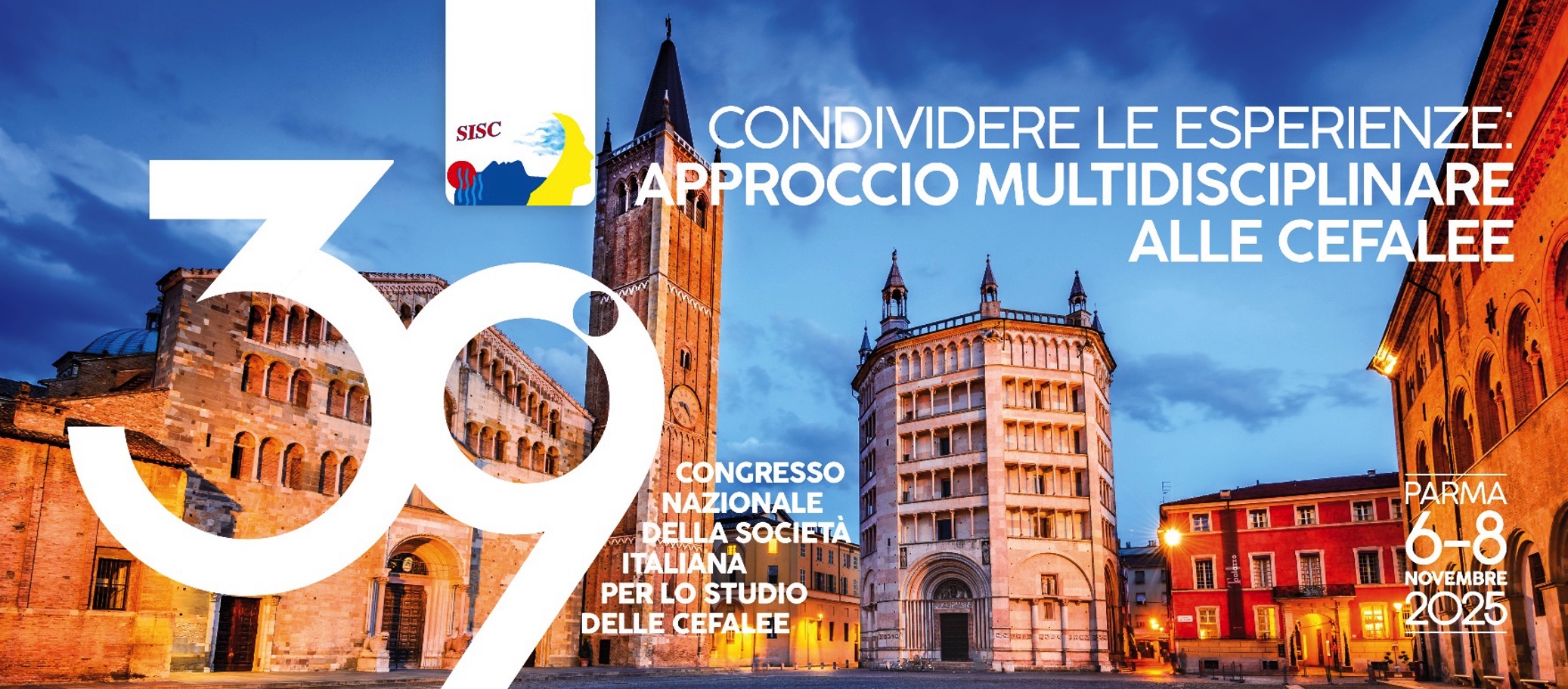SISC-Oral Communications
2025: 39° Conference of the Italian Society for the Study of Headaches (SISC)
OC-14 | Efficacy of eptinezumab during a migraine attack: preliminary data from an Italian multicenter real-world experience (the BEFREE study)
Luisa Fofi,1 Claudia Altamura,1 Marilena Marcosano,1 Alberto Doretti,2 Francesca Pistoia,3 Antonio Granato,4 Simona Guerzoni,5 Michele Trimboli,6 Licia Grazzi,7 Danilo Antonio Montisano,7 Gianluca Avino,8 Gabriele Sebastianelli,9 Carla Fasano,10 Elisa Maria Piella,11 Nicoletta Brunelli,1 Luigi Francesco Iannone,5,12 Fabrizio Vernieri1 on behalf of the Italian Headache Registry (RICe) Study Group | 1Neurosonology and Headache Unit, Fondazione Policlinico Campus Bio-Medico, Rome; 2IRCCS Istituto Auxologico Italiano - Department of Neurology and Laboratory of Neuroscience - Milan; 3University of L’Aquila; 4Headache Center, Neurology Clinic, University of Trieste, University Hospital of Trieste; 5AOU Policlinico di Modena; 6Azienda Ospedaliera-universitaria "Renato Dulbecco", Catanzaro; 7Headache Center, Neuroalgology Dpt, IRCCS Foundation "Carlo Besta" Neurological Institute, Milan; 8SOC Neurologia, Ospedale Santo Stefano, USL Toscana Centro, Prato; 9La Sapienza University of Rome Polo Pontino, Latina; 10Headache and Cerebrovascular Diseases Center, Neurology Unit 2, Careggi University Hospital, Florence; 11Department of Neuroscience “Rita Levi Montalcini”, University of Turin; 12Università di Modena e Reggio Emilia, Italy
Publisher's note
All claims expressed in this article are solely those of the authors and do not necessarily represent those of their affiliated organizations, or those of the publisher, the editors and the reviewers. Any product that may be evaluated in this article or claim that may be made by its manufacturer is not guaranteed or endorsed by the publisher.
All claims expressed in this article are solely those of the authors and do not necessarily represent those of their affiliated organizations, or those of the publisher, the editors and the reviewers. Any product that may be evaluated in this article or claim that may be made by its manufacturer is not guaranteed or endorsed by the publisher.
Published: 17 October 2025
3
Views
0
Downloads







